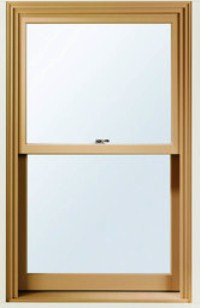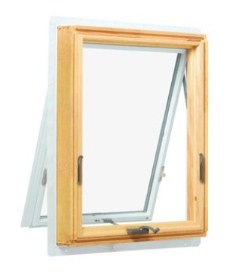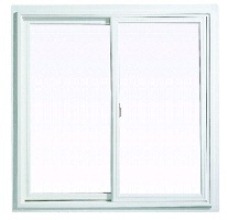How TO DETERMINE YOUR HANDING
Use the information below to identify help identify the handing of your Andersen window.
 | DOUBLE-HUNG and SINGLE-HUNG WINDOWS Andersen offers two hung window styles, a single-hung window and a double-hung window. The difference between a single-hung and a double-hung window unit is sash operation. With a single-hung window, only the lower sash can be opened (vented). With a double-hung window, both the upper and lower sash can be opened (vented) with raising or lowering. WINDOW SASH
| Andersen® Double-hung and Single-hung window units are not handed. The window parts are handed; handing is based on the part's location on the window unit as viewed from the EXTERIOR (outside) of the home.
Double-hung and Single-hung window locks are not handed. They are located on the lower window sash. Balancers are the mechanisms that hold the upper and lower window sash in place within the window frame. They are located on both the left- and right-hand sides of the window sash. Balancers are handed based on their location as viewed from the exterior (outside) of the home.
| ||
 | CASEMENT WINDOWS The easiest way to determine the handing of your casement window unit is from the interior (inside) of the home.
View this helpful Andersen® YouTube® video for more information on the handing of casement window replacement parts. | For example, in the casement window image to the left, the lock is located on the left-hand side, making this a left-handed unit.
| ||
 | AWNING WINDOWS Andersen® awning window units are not handed, but some awning parts are handed. Image to the left is a unit as viewed from the interior HINGES
| Hinges and locks are the only parts on awning windows that are handed.
Lock mechanisms are handed from the INTERIOR of the home. For example, if a lock in on the right-hand side of the window as viewed from INTERIOR of the home the lock is right-handed. Lock handles and lock bezels are universal, they are not handed. | ||
 | GLIDING WINDOWS Andersen® gliding windows units are handed from the EXTERIOR (outside) of the home based on the location of the operating window. 400 SERIES
| For example, in the photo to the left, the operating window is located on the left, making the unit left-handed. In this configuration, the window on the right is stationary or non-operable.
200 Series gliding windows only have one configuration. The opening sash will always be on the left as viewed from the exterior. The other sash is stationary and does not open (vent). Window sash are ordered either as operating or stationary. | ||


